History of AI Part 1
CS123, Intro to AI
| Topics | |
|---|---|
| Overview of AI | Neural networks and deep learning |
| History of GOFAI AI Problem Solving | Generative AI + Prompt engineering |
| Machine Learning | Custom chatbot creation |
| Midterm | Social and ethical issues of AI Final |
Table of Contents
IntroductionWhat's Happening this WeekKey Events in the History of AILady Ada Lovelace, the First Computer ProgrammerAlan Turing, the Imitation Game & Early ComputersENIAC and the First ComputersTransistorized ComputersClaude Shannon and Game TheoryArthur Samuel and Machine LearningJohn McCarthy and the Dartmouth WorkshopNewell and Simon Develop the General Problem SolverMarvin Minsky, ANNs and the MIT AI LabFrank Rosenblatt and the PerceptronWidrow and Hoff Develop ADALINEJoseph Weizenbaum and ElizaAI winterDeep Blue Beats a World Champion Chess PlayerReference
Introduction
What's Happening this Week
Exercises for Ch. 2, "Problem Solving" in Elements of AI
Lecture Q and A forum for online students
Lecture quiz for everyone.
Next week the first project will be due.
Key Events in the History of AI
This is part 1 of the history of AI. It starts with the first computer programmer in 1843 and continues on up through the development of symbolic AI (also known as Good Old Fashioned AI) ending in 1997 with a computer beating the world chess champion.
Lady Ada Lovelace, the First Computer Programmer
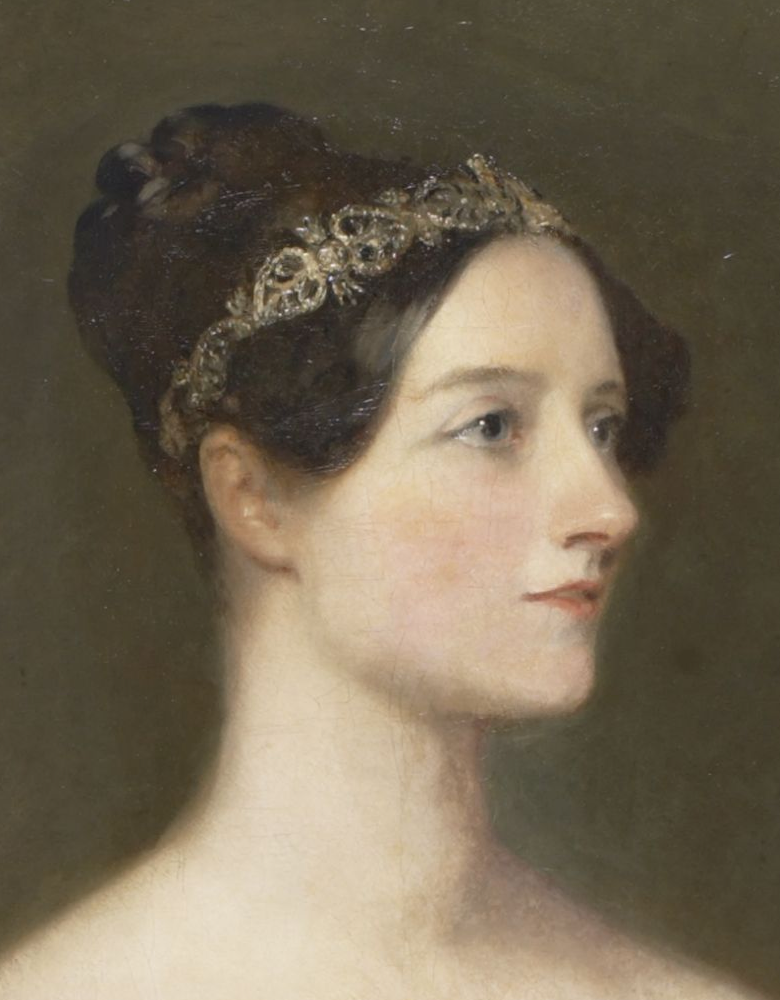 Margaret Sarah Carpenter's portrait of Lady Ada Lovelace
Margaret Sarah Carpenter's portrait of Lady Ada Lovelace
1843: Lady Ada Lovelace, often recognized as the world’s first computer programmer, foresaw some aspects of artificial intelligence. In her “Translator’s Note G,” (her translation from French of lectures by Charles Babbage) dubbed by Alan Turing as “Lady Lovelace’s Objection,” She envisioned machines capable of performing complex tasks beyond mere calculation, foreshadowing the capabilities of modern AI systems. However, she maintained that these machines would not have the ability to understand or originate anything. They would only be able to do what they were programmed to do.
Alan Turing, the Imitation Game & Early Computers
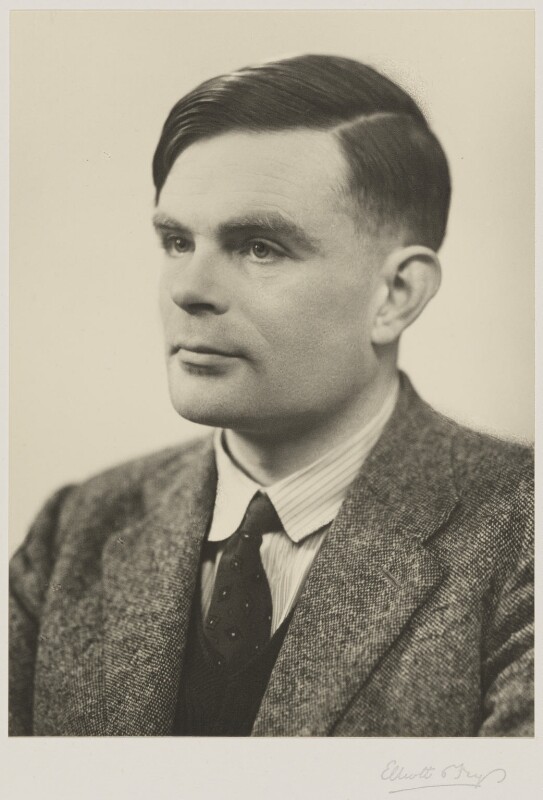 by Elliott & Fry, vintage bromide print on photographer's mount, 29 March 1951, NPG x27079, © National Portrait Gallery, London, used by permission under a cc by-nc-nd/3.0 license.
by Elliott & Fry, vintage bromide print on photographer's mount, 29 March 1951, NPG x27079, © National Portrait Gallery, London, used by permission under a cc by-nc-nd/3.0 license.
1936: Turing published a paper tilted "On Computable Numbers, with an Application to the Entscheidungsproblem1". In this paper he devised a theoretical design for computing machine2 which is now call a Turing machine3. Almost all modern computers are Turing machines.
1939: The British military put the first Bombe machine into operation. This computer and its successors were in part based on the theoretical work done by Turing and were used to break the German Enigma code. Since it was not generally programable, it was not considered Turing complete.
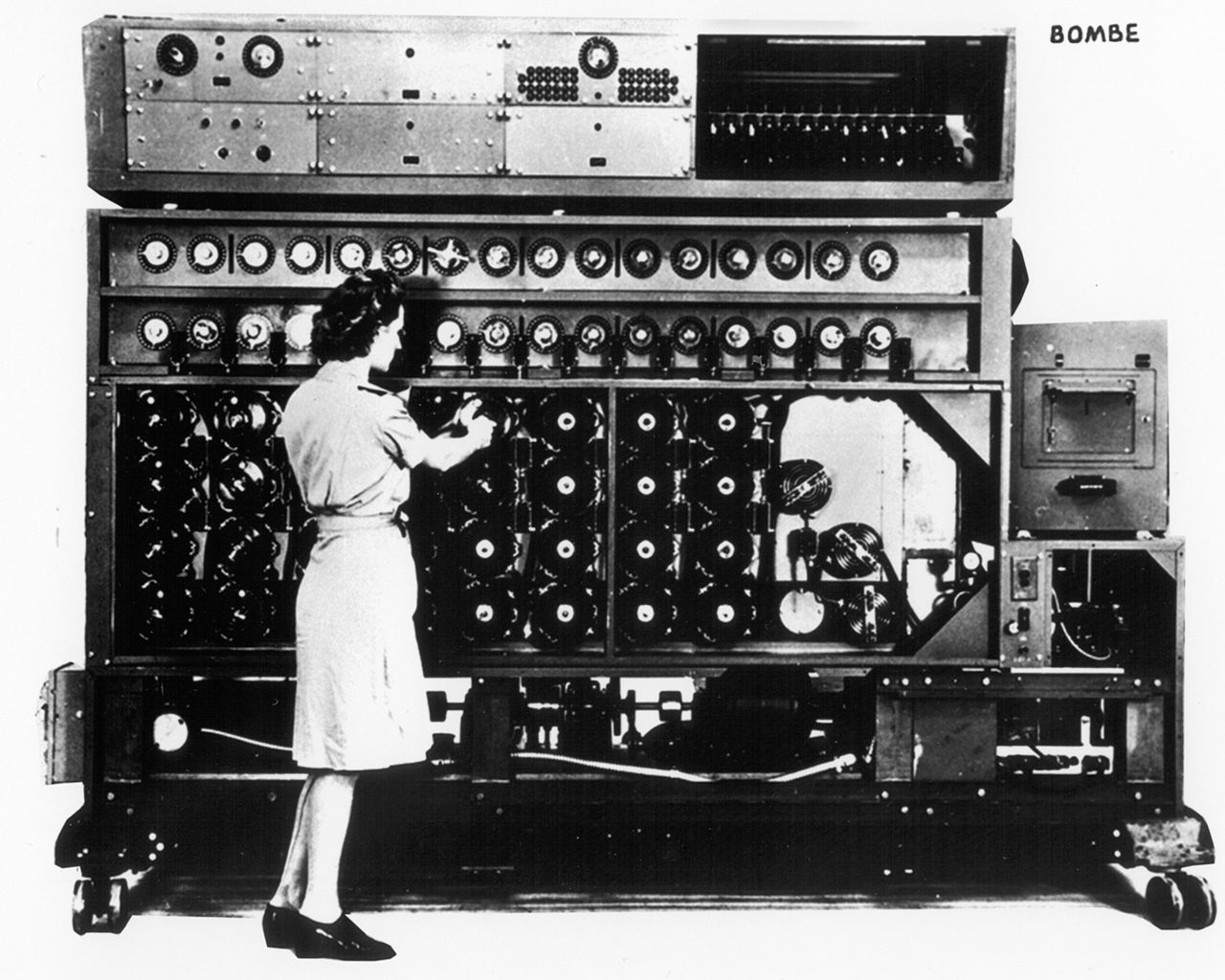
1950: Alan Turing published a paper titled “Computing Machinery and Intelligence,” questioning whether or not machines could manifest human intelligence and proposed the "imitation game", aka the Turing test.
1954: Alan Turing tragically committed suicide at the age of 42 after being prosecuted for being gay.
ENIAC and the First Computers
1946: The ENIAC (Electronic Numerical Integrator and Computer) - was completed at the University of Pensilvania by a team led by John Mauchly and J. Presper Eckert. It is considered by many4 to be the first Turing complete machine. It used over 17,000 vacuum tubes which required a lot space and power and created a lot of heat.
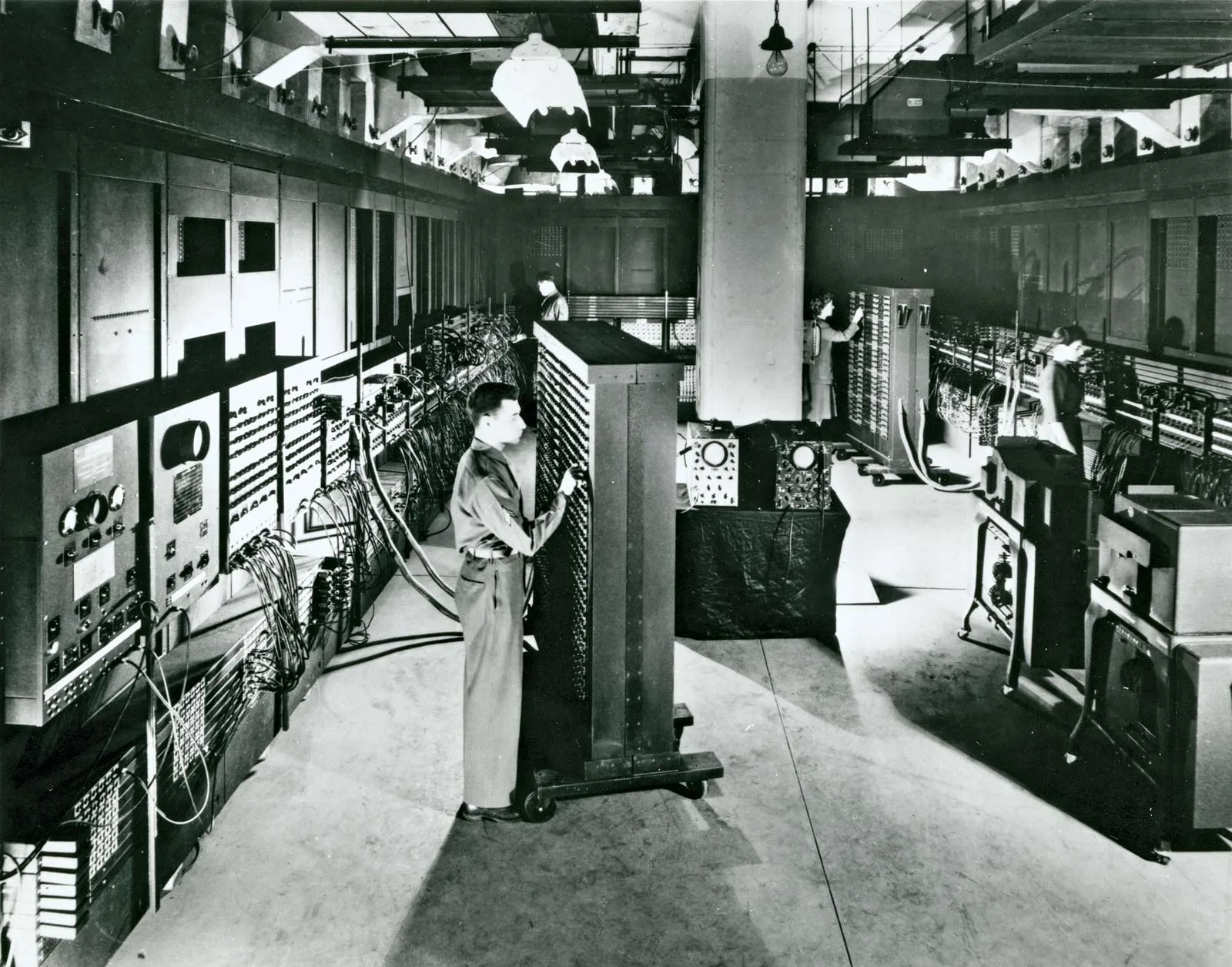
Courtesy of the Moore School of Electrical Engineering, University of Pennsylvania
Why this matters: The significance of the development of a computer that could be re-programed for different tasks was a prerequisite for developing AI software.
Transistorized Computers
1962: The IBM 7094 was the first transistorized mainframe computer. It was a large, powerful computer using over 12,000 transistors and was designed for scientific and engineering applications.
1967: The IBM 360 Model 95 was the first mainframe computer built using integrated circuits (ICs). It had over 12,000 ICs, with each contained many transistors. The total number of transistors was over 100,000. It had a clock speed of 1.9 MHz and 256 KB of memory. It was considered to be extremely high performance in its day and was used for a variety of applications, including business processing, scientific simulations, and data processing.
Claude Shannon and Game Theory
Claude Shannon, and electrical engineer and mathematician, is often referred to as the "father of the modern digital computer".
1950: He published "Programming a Computer for Playing Chess". In which he described a computer program for playing chess which used a game tree and the minimax algorithm. It laid the foundation for the development of AI game-playing programs and is still influential in the field of artificial intelligence and game theory.
Arthur Samuel and Machine Learning
1952: Arthur Samuel created a checkers-playing computer program that could determine the probability of winning a game. It was the first program to learn how to autonomously play a game. This was one of the first reinforcement learning programs.
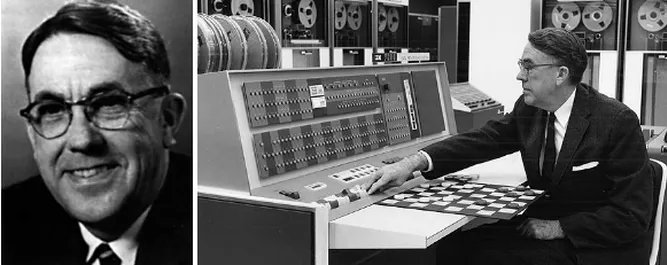
Arthur Samuel playing checkers with IBM's first actual computer, the 701.
John McCarthy and the Dartmouth Workshop
A mathematics professor at Dartmouth College who coined the term Artificial Intelligence.
1956: Dartmouth Summer Research Project on Artificial Intelligence.
The workshop was based on the idea that: "Every aspect of learning or any other feature of intelligence can in principle be so precisely described that a machine can be made to simulate it."
This workshop is considered the founding event of AI research as a distinct field of study.
Newell and Simon Develop the General Problem Solver
1957: The General Problem Solver (GPS), an early AI program developed by Allen Newell and Herbert A. Simon at the Rand Corporation, was intended to be a universal problem solver.
GPS used a technique called means-ends analysis. This involved identifying differences between the current state and the goal state, then finding and applying operators that would reduce these differences. In other words, it created a state-space and used transitions to move from one state to another.
It’s worth noting that while GPS was groundbreaking, it was limited by the computational power of the time and the complexity of many real-world problems. Nevertheless, GPS laid the foundation for many future developments in AI including the Soar archtecture which was developed by Newell and others and is still used for commercial applications and is avialable as open source software.
Marvin Minsky, ANNs and the MIT AI Lab
Marvin Lee Minsky was an American cognitive and computer scientist who is often referred to as one of the fathers of AI. He defined AI as “the science of making machines do things that would require intelligence if done by men”.
1951: Minsky built the first learning machine using an artificial neural network built from vacuum tubes called the Stochastic Neural Analog Reinforcement Calculator, or SNARC. We will see this again when we cover the history of connectionism is AI.
1959: He co-founded the Massachusetts Institute of Technology's AI laboratory.
Frank Rosenblatt and the Perceptron
1957: The perceptron, designed by by Frank Rosenblatt, was based on the McCulloch–Pitts mathematical model of a neuron (1943). It was a system for supervised machine learning for binary classifiers. This was an early example of connectionism which was a competing approach to symbolism the dominant approach to AI at the time.
The perceptron and connectionism were criticized by Marvin Minsky and Seymour Papert. in their 1969 book titled Perceptrons. In this book, they argued that the perceptron had severe limitations. Their critique contributed to a decrease in enthusiasm and funding for connectionist research and contributed to the beginning of what is known as the "AI winter".
We will discuss the perceptron and connectionism further in a few weeks.
Widrow and Hoff Develop ADALINE
1962: Bernard Widrow and Marcian Hoff of Stanford developed models called “ADALINE” and “MADALINE”. ADALINE was developed to recognize binary patterns so that if it was reading streaming bits from a phone line, it could predict the next bit. MADALINE was the first neural network applied to a real-world problem, using an adaptive filter that eliminates echoes on phone lines
Joseph Weizenbaum and Eliza
1966: Eliza program, a Rogerian therapist chatbot. You can try a modern version of Eliza on this web site.
Why this matters: ELIZA was one of the first programs to do Natural Language Processing (NLP) and to simulate conversation between a human and a machine. It used pattern matching and simple rules to respond to user input, creating the illusion of understanding.
AI winter
In 1974, the applied mathematician Sir James Lighthill published a critical report on academic AI research, claiming that researchers had essentially over-promised and under-delivered when it came to the potential intelligence of machines. His condemnation resulted in stark funding cuts.
The period between the late 1970s and early 1990s signaled an “AI winter”—a term first used in 1984—that referred to the gap between AI expectations and the technology’s shortcomings.
(From The History of AI: A Timeline of Artificial Intelligence)
Deep Blue Beats a World Champion Chess Player
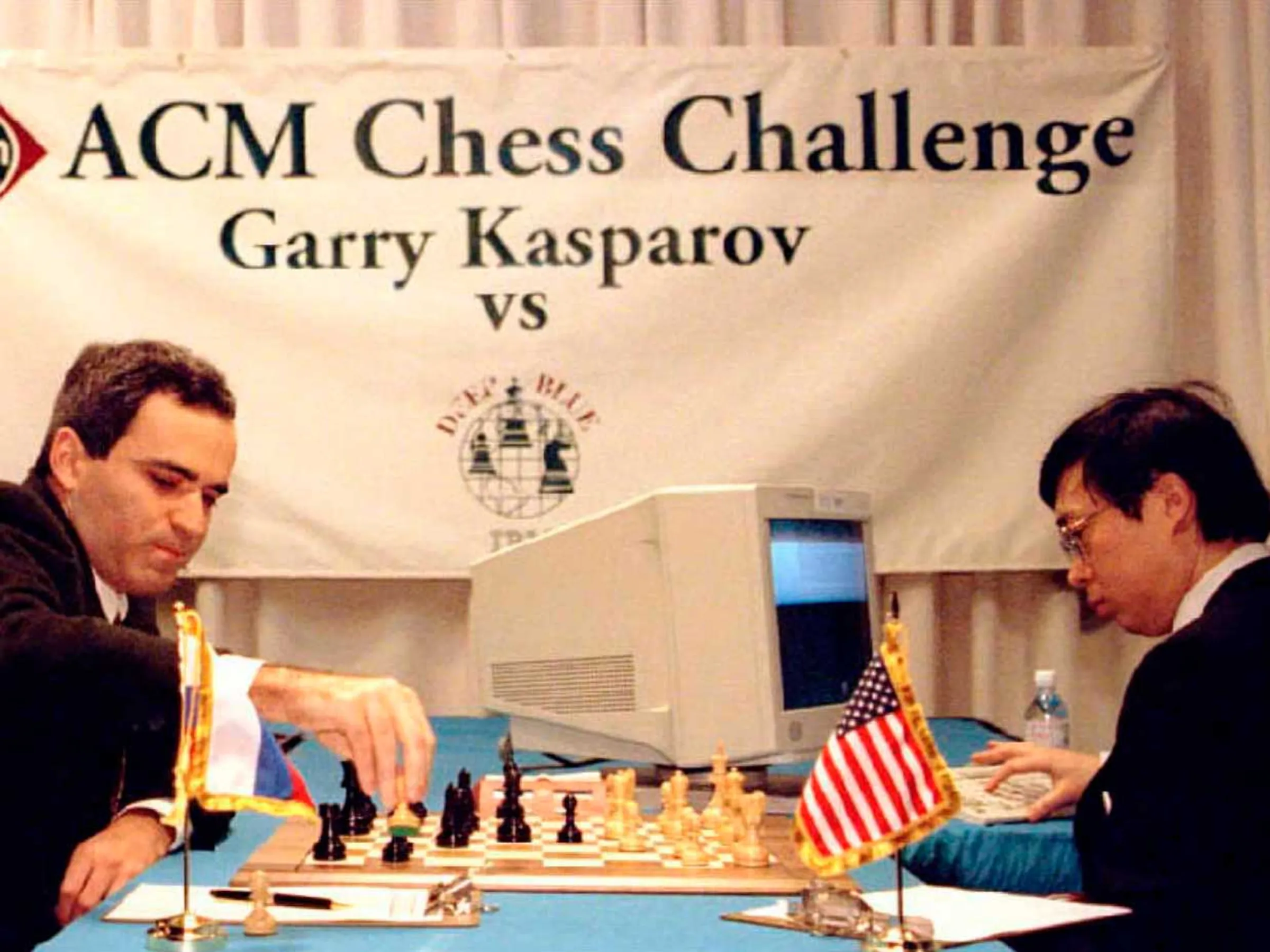 Garry Kasparov (left) playing against Deep Blue at the ACM Chess Challenge in Philadelphia.
Photo: Tom Mihalek/AFP/Getty Images
Garry Kasparov (left) playing against Deep Blue at the ACM Chess Challenge in Philadelphia.
Photo: Tom Mihalek/AFP/Getty Images
1997: IBM's Deep Blue was the first computer to defeat a reigning world chess champion, Garry Kasparov. Deep Blue's AI methodologies were primarily based on brute force symbolic computing power using techniques like preprogrammed chess rules, game trees and state-space searches. It did not use machine learning or neural networks.
It used 32 processors to perform a set of coordinated, high-speed computations in parallel. The system was capable of evaluating 200 million chess positions Per Second, achieving a processing speed of over 11 Gigaflops (11 billion Floating Point Operations per Second).
Reference
Alan Turing and the Birth of the Modern Computer—CBS News
The Games that helped AI Evolve—IBM
Soar (Cognitive Archigtecture)—Wikipedia
How IBM’s Deep Blue Beat World Champion Chess Player Garry Kasparov—Joanna Goodrich 25 Jan 2021, IEEE Spectrum.
The History of AI: A Timeline of Artificial Intelligence—Coursera
The Quest for Artificial Intelligence: A History of Ideas and Achievements—Nils J. Nilsson, Cambridge University Press, 2010.
Timeline of AI—an interactive timeline of the history of AI
 Intro to AI lecture notes by Brian Bird, written in , are licensed under a Creative Commons Attribution-ShareAlike 4.0 International License.
Intro to AI lecture notes by Brian Bird, written in , are licensed under a Creative Commons Attribution-ShareAlike 4.0 International License.
Note: GPT-4 and GPT-4o were used to draft parts of these notes.